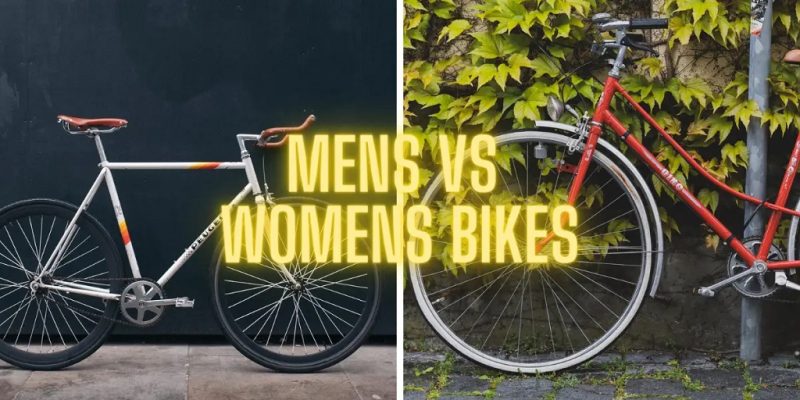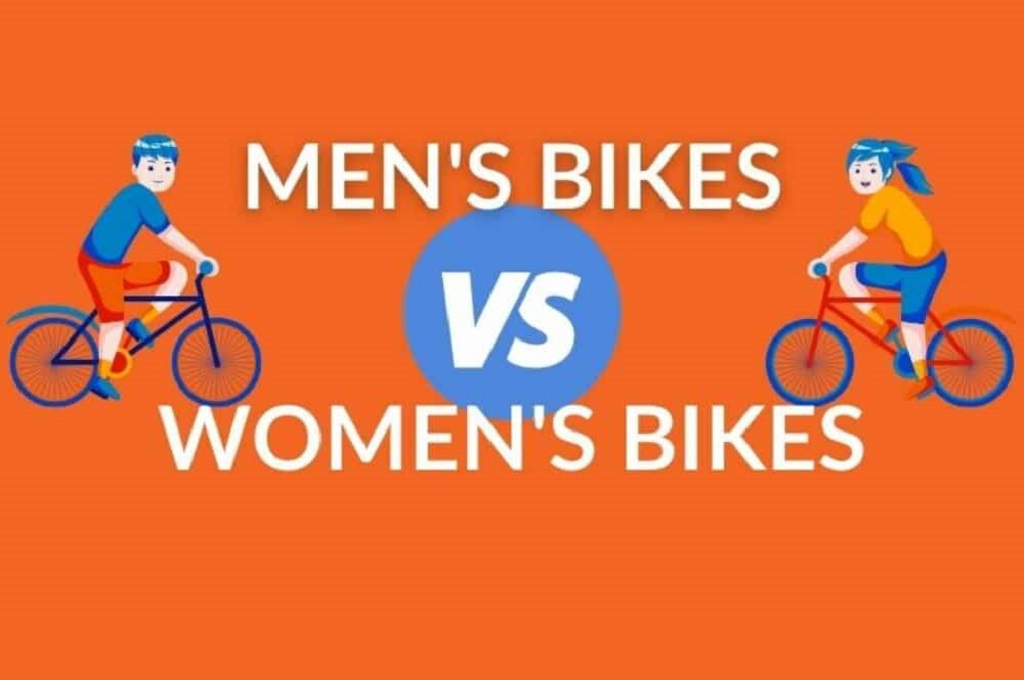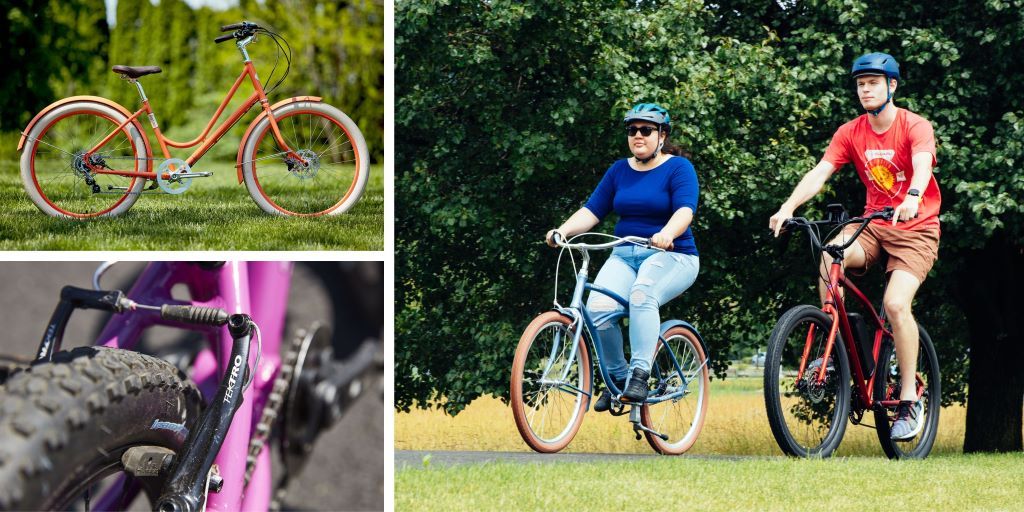Male bikes typically feature a horizontal top tube, while female bikes have a slanted top tube for easier mounting. The design differences ensure a more comfortable and efficient riding experience for each gender.
When choosing between male and female bikes, it’s important to consider the frame geometry to match the rider’s body proportions. Additionally, the saddle and handlebar placements are adjusted to cater to the specific needs of male and female riders. While the basic functionality remains the same, these subtle design variations can significantly impact the overall comfort and performance of the rider.
Understanding these distinctions can help cyclists make an informed decision when selecting the most suitable bike for their needs.
Understanding The Basic Differences
Male and female bikes differ in their frame geometries to accommodate the distinct body structures of each gender. Female-friendly bikes typically feature lower-top tubes for easier mounting and dismounting, a consideration that enhances accessibility and comfort. Furthermore, these bikes often come with a shorter reach, narrower handlebars, and a wider saddle, specifically designed to provide a better fit and enhanced comfort for women riders. For those interested in exploring a variety of bikes that cater to these specific needs, outdoorxsports.com offers an extensive selection tailored to suit the preferences and requirements of female cyclists, ensuring every ride is as comfortable and enjoyable as possible.
| Frame Geometry | Saddle Design |
| Male bikes have a top tube, while female bikes feature a sloping top tube. | Female bikes often have a wider and more cushioned saddle for comfort. |
| Female bikes typically have shorter top tubes to accommodate a shorter torso. | Male bike saddles are usually narrower and longer for longer sit bones. |
| Male bikes usually have a larger frame size and longer reach. | Female bikes may have a shorter reach and narrower handlebars. |
Exploring Ergonomics
Male and female bikes have different handlebar shapes for comfort. The handlebars are designed based on the average shoulder width of each gender. The grip size and texture vary to accommodate hand size and preference.
Unveiling Performance Variances
Male and female bikes differ in various aspects, including gear ratios and suspension systems, which are essential considerations for those interested in MTB bikes for women. Gear ratios on male bikes are typically higher, providing better speed, which suits riders looking for performance-oriented cycling. Conversely, female bikes have lower gear ratios for improved torque, making them ideal for climbing and providing a more comfortable ride over different terrains. In terms of suspension systems, male bikes usually feature stiffer setups to accommodate heavier riders and more aggressive riding styles. On the other hand, female bikes are designed with softer suspension to cater to lighter weight and often provide a more comfortable ride, taking into account the generally lighter body weight of female riders. Understanding these differences enables cyclists to select a bike that best suits their individual riding needs and preferences, ensuring a better and more tailored biking experience.
Addressing Aesthetics
Bicycles are designed differently for males and females, with a major distinction being the aesthetics. Color schemes, decals, and graphics play a crucial role in differentiating between male and female bikes. Manufacturers recognize the importance of visual appeal and offer a wide range of options to cater to individual preferences and styles.
Color schemes for male bikes often include shades of black, blue, gray, and other darker tones, which convey a sense of strength and masculinity. On the other hand, female bikes often feature a palette of bright, vibrant colors like pink, purple, or pastel shades, which are associated with femininity.
When it comes to decals and graphics, male bikes usually have bold and sporty designs, showcasing speed and power. These graphics often include geometric patterns or dynamic lines. Female bikes, on the other hand, may feature floral motifs, intricate patterns, or softer curves, reflecting elegance and grace.
Ultimately, the difference between male and female bikes lies in the overall design, including color schemes, decals, and graphics. Each design element is carefully selected to appeal to specific genders and reflect their distinct preferences.
Understanding Market Segmentation
Male and female bikes are specifically designed to accommodate the different anatomical and physiological characteristics of each gender. They are both marketed to distinct target demographics.
Marketing Strategies:
- Tailored Designs: Male bikes often feature a top horizontal tube to accommodate their taller stature, while female bikes have a sloping top tube for easier mounting and dismounting.
- Color Palettes: Marketing strategies focus on gender preferences by using specific colors. Traditional male bikes are commonly marketed with dark, bold colors, whereas female bikes often employ lighter and brighter hues.
- Saddle Comfort: Female-specific bike saddles are wider and shaped differently to cater to the variation in pelvic bone structure, ensuring a comfortable riding experience.
- Marketing Campaigns: Advertisements often feature individuals of the respective genders enjoying activities targeted towards their interests. This creates a connection between the consumer and the product.
Understanding the difference between male and female bikes is crucial in market segmentation. Manufacturers and retailers strategize to meet the varying needs and preferences of their target audiences, leading to successful sales and customer satisfaction.
Frequently Asked Questions On What Is The Difference Between Male And Female Bikes
What Are The Key Differences Between Male And Female Bikes?
Male and female bikes differ in frame size, geometry, and design. Female bikes generally have shorter top tubes and better weight distribution, focusing on comfort. Male bikes tend to have longer top tubes and a more aggressive riding position, emphasizing power and performance.
Can Women Ride A Male Bike?
Yes, women can ride a male bike. However, it may not be as comfortable or efficient compared to a female-specific bike. Women’s bikes are designed to accommodate the average female body proportions, providing better comfort and performance for female riders.
Why Do Female Bikes Have A Different Frame Design?
Female bikes have a different frame design to cater to women’s anatomical differences. They feature a shorter top tube, shorter reach, and a sloping top tube to make it easier for women to mount and dismount the bike. This design also improves comfort and stability during rides.
Do Male And Female Bikes Have Different Saddle Designs?
Yes, male and female bikes usually come with different saddle designs. Female saddles are wider and have a shorter nose to provide better support for wider sit bones and to prevent soft tissue pressure. Male saddles are narrower and longer to accommodate their body structure and provide comfort during rides.
Conclusion
Understanding the key differences between male and female bikes can aid in better decision-making when purchasing a new bicycle. By recognizing the distinct design features and intended use, Explore now Lightweight BMX Bikes for Thrill-Seekers, individuals can select the most suitable option for their riding needs. Ultimately, awareness of these disparities can enhance the overall biking experience.






